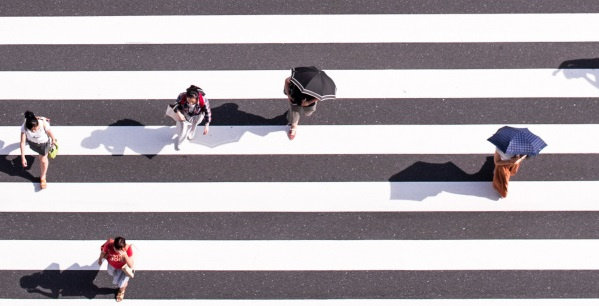
One of the key features of the 1.5° lifestyles approach is going beyond the assumption that consumers are the only ones responsible for the climate impacts of consumption. Our lives and behaviors are shaped and structured by factors such as income, policy, infrastructure, media and societal values. All of these variables shape the environment in which we consume and determine which choices are available for individuals living in different environments.
These forces can serve as barriers or enablers in achieving the transition to 1.5° lifestyles.
As part of the EU 1.5 Lifestyles project, we sat down with two internationally renowned sustainability experts to explore the role of these enablers and barriers and how we can promote the uptake of low-carbon lifestyle options. Here are some of the key takeaways from our conversation.
Cecilia M. V. B. Almeida
Cecilia has a degree in Chemical Engineering from the Universidade Presbiteriana Mackenzie and a PhD in Chemistry (Physics and Chemistry) from the University of São Paulo (1999). She is a Full Professor at ICET (Institute of Exact and Technological Sciences) and leads the Post-Graduation Program in Production Engineering at Universidade Paulista since 2000. She develops research in Cleaner Production and Industrial Ecology, where concepts, tools and techniques are assessed for the calculation of environmental and sustainability indicators. She also works as a researcher at LaPROMA (Laboratory of Production and Environment) of the Paulista University, and is an active member of the Advances in Cleaner Production Network. Cecilia is Co-Editor-in-Chief of the Journal of Cleaner Production and Cleaner and Responsible Consumption.
Simone Bastianoni
Simone is a Full Professor of Environmental and Cultural Heritage Chemistry at the University of Siena in Italy, where he chairs the PhD School in Environmental, Geological and Polar Sciences. He is a Member of the Standard Committee of the Global Footprint Network, Chief Editor of the journal Frontiers in Energy Systems and Policy and of the section Human Ecology and Sustainability of the Encyclopedia of Ecology. He leads the Sustainable Development Solutions Network team at the University of Siena and the sustainability indicators team for the PRIMA Programme.
Our values must change.
We have a fundamental need to shift the value system of our society. Currently, what is viewed as a successful lifestyle remains focused on owning more, consuming more, or having a higher income. But we have to shift this image of success towards sharing more, helping others, and consuming only what is needed. Bastianoni states that if we coherently change the definition of success to one less based on competition and more based on collaboration, then more sustainable lifestyles will be perceived as the right and most acceptable ones, while unsustainable consumption will become socially unacceptable. “We know how to reduce emissions,” said Almeida, “we have the knowledge, but changing values is hard.” To do so, we need a coherent behavior and vision from all actors involved, including business, policymakers, the financial sector, and people.
Education and our media environment will be key.
Education plays a big role in this value change and subsequently in enabling the transformation of our lifestyles. However, we must recognize the multitude of forms that education can take. Today, consumers are informally educated through media and social media, advertising, and in their neighborhoods and workplaces. While the role of formal education is indeed essential for enabling more sustainable lifestyles, a range of actors including business and the media must take responsibility for their inherent impact on consumption behavior.
Value change could lead to critically needed cuts in consumption.
When addressing trade-offs among different lifestyle options, we could start from reducing consumption styles that are farther away from our basic needs. Excessive consumption for leisure is one clear example, as well as buying luxury items, flying to the other end of the world for your holidays, or purchasing excessive amounts of clothes.
Everything is interconnected.
There are many ways to lower lifestyle emissions. However, we live in a world of systems and the key variables are all interconnected. Almeida pointed out that food, for example, “needs to be produced and distributed before it is finally purchased and eaten.” All of these steps show the overlap between production, transportation and consumption that form a complex web of systems, all of which need to be adjusted in order to lower emissions. Similarly, business practices take shape within existing policies and are affected by social norms, and vice versa. All this calls for a holistic approach where synergies between enablers and barriers are maximized, while trade-offs are minimized.
There are many entry points for change.
“I believe in cycles – both virtuous and vicious,” said Bastianoni. This also means that there are many entry points for change. Change can be initiated by societies or by governments or in any industry. And this change can affect our lifestyles at a broader level. Almeida also says that consumer demand is a critical lever for change in improving sustainable production and consumption patterns.
To conclude, we should learn from the past how very specialized and narrow solutions never truly worked out in the long-term. Mostly or solely relying on fossil fuels for economic growth and development brought us to the present times of environmental and social crises. We need multiple and adaptable solutions that work in synergy and resonate with the multitudes of aspirations, needs, and desires of people across the world.
Dana Vigran, Hot or Cool Institute
Image source: Japanese street crossing by Ryoji Iwata

